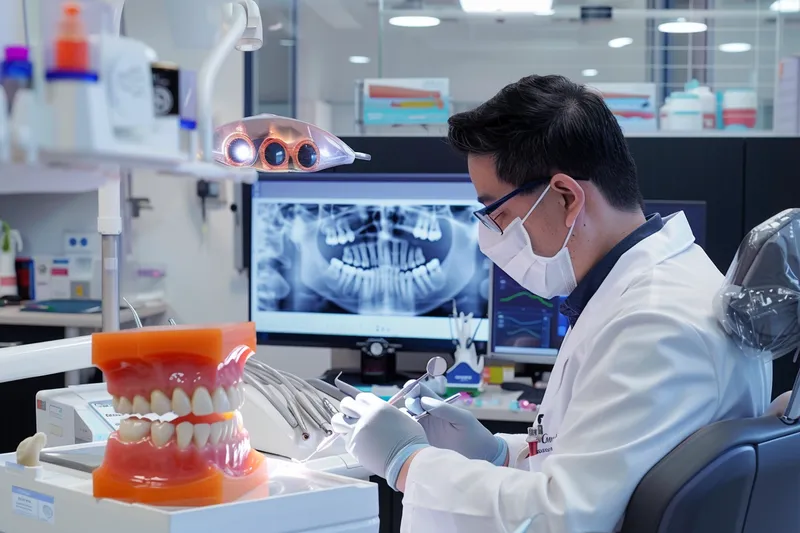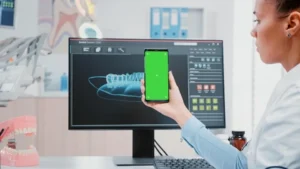The field of dentistry has witnessed significant transformative changes over the years, paving the way for advanced dental care that not only enhances aesthetic appeal but also ensures stronger, longer-lasting results. With the incorporation of cutting-edge technologies such as 3D imaging and laser dentistry, dental professionals can now offer more precise, less invasive treatments. This article explores how these technological advancements have reshaped dental practices, improving both patient comfort and treatment outcomes.
Introduction to the Evolution of Dentistry
The field of dentistry has undergone a tremendous transformation over the centuries. Advances in dental technology and research have significantly improved the way oral health is managed and maintained. This evolution is characterized by the integration of modern techniques and materials that provide better outcomes for patients. By understanding the historical context and key milestones in dental research, we can appreciate the journey that has led to the current state of dental practice.
Today, dentistry encompasses a variety of specialties, each contributing to the comprehensive care of patients. Among these, implantology and bone regeneration stand out as critical areas that have seen remarkable progress. This article aims to explore the historical perspective and pivotal achievements in dental research that have shaped modern dentistry.
Historical Perspective
The history of dentistry can be traced back to ancient civilizations. Evidence of dental treatments such as tooth extraction and drilling has been found in archaeological sites dating back to 7000 BC. The advent of written records in ancient Egypt and Mesopotamia reveals that early dental practitioners used rudimentary tools and herbal remedies to address dental issues. Despite the crude methods, their attempts laid the groundwork for future developments in oral healthcare.
During the Middle Ages and Renaissance period, dentistry began to evolve from a craft practiced by barbers and blacksmiths to a more defined medical profession. The publication of Pierre Fauchard’s “Le Chirurgien Dentiste” in 1728 marked a significant milestone. Fauchard, often referred to as the “father of modern dentistry,” introduced many concepts and techniques that are still in use today, such as the use of dental prosthetics and the importance of oral hygiene.
In the 19th century, the establishment of dental schools and professional organizations further advanced the field. The American Journal of Dental Science, first published in 1839, played a crucial role in disseminating knowledge and research findings. This period also saw the invention of dental equipment like the foot-treadle dental drill, which greatly improved the efficiency and effectiveness of dental treatments.
Milestones in Dental Research
Research plays a pivotal role in the advancement of any medical field, and dentistry is no exception. Some significant milestones in dental research have revolutionized the way oral health issues are diagnosed and treated. One of the groundbreaking discoveries is the introduction of fluoride in the 20th century. Studies, like those conducted by Dr. H. Trendley Dean, demonstrated the effectiveness of fluoride in preventing dental caries. This led to the widespread fluoridation of public water supplies and the development of fluoride-containing dental products.
Another notable advancement is the development of dental implants. In the 1950s, Swedish orthopedic surgeon Dr. Per-Ingvar Brånemark discovered that titanium could bond with bone tissue, a process called osseointegration. This discovery paved the way for modern dental implants, offering a durable and effective solution for tooth replacement.
In recent years, regenerative dentistry has gained momentum, with research focusing on the use of stem cells and growth factors to regenerate dental tissues. Studies have shown promising results in utilizing these biological tools to repair damaged teeth and bone, potentially eliminating the need for more invasive procedures in the future.
Moreover, digital technology has transformed dental diagnostics and treatment planning. The introduction of 3D imaging, computer-aided design (CAD), and computer-aided manufacturing (CAM) has facilitated precise and customized dental restorations, improving patient outcomes and satisfaction.
The continuous advancements in dental research underscore the importance of staying informed about the latest developments. As new technologies and methodologies emerge, they offer the potential to further enhance the quality of dental care.
If you found this overview fascinating, don’t miss out on our other articles that delve deeper into specific aspects of dental evolution and cutting-edge treatments!
Technological Advances in Diagnostic Tools
The field of dental diagnostics has seen a significant transformation due to the advent of advanced technologies. These innovations have revolutionized how we diagnose and plan treatment, offering more accurate, efficient, and patient-friendly solutions. Among the most impactful innovations are Digital X-rays and Intraoral Scanners. By embracing these technologies, dental professionals can provide better care and improve patient outcomes.
Traditional diagnostic tools were often limited in their ability to provide clear and detailed images, sometimes leading to misdiagnoses or the need for multiple imaging sessions. However, the latest technological advancements have addressed these issues, offering enhanced visualization and diagnostic capabilities. This evolution in diagnostic tools not only benefits the patients but also enhances the practice for dental professionals, making procedures smoother and more predictable.
Digital X-rays
Digital X-rays have largely replaced traditional film-based X-rays due to their numerous advantages. They provide higher resolution images, allowing for more precise diagnosis and treatment planning. Additionally, digital X-rays significantly reduce the amount of radiation exposure, making them a safer option for both patients and dental staff.
The process of taking digital X-rays is also much quicker and more efficient. Images are available almost immediately and can be easily enhanced, stored, and shared. This allows for quicker decision-making and collaboration with other specialists if needed. Consequently, digital X-rays contribute to a more streamlined workflow in dental practices.
Moreover, digital X-rays are environmentally friendly. They eliminate the need for chemical processing and film, reducing the waste and environmental impact associated with traditional X-ray methods. This aligns with the growing emphasis on sustainable practices within the healthcare industry.
Intraoral Scanners
Intraoral scanners represent another leap forward in dental diagnostics. These devices create highly detailed, three-dimensional images of the dental structures, providing an unmatched level of detail and accuracy. This technology allows for better-fitting restorations, such as crowns, bridges, and implants.
The use of intraoral scanners improves patient comfort. Traditional impressions often involve messy, uncomfortable materials that can cause gagging or discomfort. In contrast, intraoral scanners are non-invasive and can capture the necessary data quickly and without discomfort.
The digital models created by intraoral scanners can be easily integrated with other digital tools, such as CAD/CAM systems, facilitating the design and manufacture of dental prosthetics. This seamless integration shortens the turnaround time for dental treatments, enhancing both efficiency and patient satisfaction.
Moreover, intraoral scanners provide a valuable educational tool. The visual models can help patients understand their dental issues and the proposed treatments better, fostering more informed decision-making and increasing patient engagement in their own care.
Innovations in Dental Treatment Techniques
The field of dental treatment is undergoing a significant transformation thanks to the advent of new technologies and techniques. These innovations not only ensure better patient outcomes but also enhance the overall experience, making dental visits less daunting. Advancements in digital dentistry, such as laser technology, 3D printing, and robotic systems, are at the forefront of this revolution.
In this article, we will explore some of the most exciting developments in dental treatment techniques, focusing on laser dentistry, 3D printing in dentistry, and robotic-assisted dental surgery. Each of these technologies offers unique benefits and has the potential to redefine how dental care is delivered.
Laser Dentistry
Laser dentistry has emerged as a minimally invasive alternative to traditional dental procedures. By using focused light beams, lasers can effectively treat a variety of dental issues with greater precision and less discomfort. The technology is particularly beneficial for removing decay, reshaping gum tissue, and performing biopsies. One of the major benefits of laser dentistry is its ability to reduce patient anxiety. The absence of drills and needles makes the procedures less intimidating. Additionally, lasers often result in faster healing times and less post-operative discomfort. Studies have shown that laser treatments can reduce bleeding and minimize infection risks, leading to improved outcomes.
There are different types of lasers used in dentistry, including soft tissue lasers and hard tissue lasers. Soft tissue lasers are commonly used for gum treatments, while hard tissue lasers can be employed for procedures involving teeth and bone. As this technology continues to evolve, we can expect even more versatile and effective applications in the future.
3D Printing in Dentistry
3D printing is revolutionizing many industries, and dentistry is no exception. This technology allows for highly customized dental appliances, such as crowns, bridges, and dentures, to be produced with exceptional accuracy. By using digital scans of a patient’s mouth, dental professionals can create precise and comfortable fittings.
One of the standout advantages of 3D printing in dentistry is speed. Traditional methods of crafting dental prosthetics can take weeks, whereas 3D printing can produce the same items in a matter of hours. This efficiency translates to shorter waiting times for patients and faster treatment cycles.
Beyond speed, 3D printing also offers cost-effectiveness. The technology reduces material waste and labor costs, making it a more economical option. Moreover, it allows for the production of complex structures that would be difficult or impossible to create using conventional methods.
As the technology becomes more advanced, we are likely to see even greater integration of 3D printing in dental practices. Innovations such as bioprinting, which aims to create tissues and even organs, hold promising potential for the future of regenerative dentistry.
Robotic-Assisted Dental Surgery
Robotic-assisted dental surgery represents the cutting edge of dental technology. These systems combine robotics with artificial intelligence to perform highly precise surgical procedures. Robotic systems can be used for implant placements, extractions, and other complex surgeries, ensuring greater accuracy and consistency than traditional methods.
Using robotic assistance, dental surgeons can achieve better outcomes with reduced risks of errors. The robots are capable of making minute adjustments that are beyond human capability, which is particularly beneficial in delicate procedures. Additionally, the use of robots can lead to less invasive surgeries, thereby reducing recovery times and improving patient comfort.
Another significant advantage is the ability to perform remote surgeries. In areas where specialized dental care is not readily available, robotic systems can be controlled by expert surgeons from different locations, ensuring that high-quality care is accessible to more people.
Despite the high initial costs, the long-term benefits of robotic-assisted dental surgery make it a worthy investment. As the technology becomes more widespread and affordable, we can expect to see a dramatic shift in how complex dental procedures are performed.
In conclusion, the future of dental treatment is bright, thanks to these groundbreaking innovations. From laser dentistry and 3D printing to robotic-assisted surgeries, these advancements are setting new standards in patient care and outcomes. Stay tuned for more articles that delve deeper into the evolving world of dental technology.
Key Questions on Technological Breakthroughs in Dentistry
As dentistry evolves, staying informed about the latest technologies is crucial. These key questions and answers will help you understand the significant advancements that have transformed dental treatments.
What are the latest technological advancements in dental imaging?
Recent years have witnessed revolutionary changes in dental imaging technologies. Digital X-rays now provide detailed images with lower radiation exposure. Furthermore, 3D imaging techniques, such as Cone Beam Computed Tomography (CBCT), allow dentists to view the teeth, nerves, and bones in three dimensions, enabling precise diagnoses and treatment planning.
How has technology improved dental implants?
Technological improvements have significantly enhanced the success of dental implants. The incorporation of CAD/CAM (Computer-Aided Design and Computer-Aided Manufacturing) systems allows for the design and fabrication of customized implants that perfectly fit the patient’s anatomy. Additionally, new materials such as titanium zirconium and advances in surface technology have improved the osseointegration process, leading to more durable and reliable implants.

My name is Salman Kapa, a 73-year-old expert in bone regeneration and dental implantology. With decades of experience in the field, I am dedicated to advancing our understanding of oral health and hygiene. Through my research and writing, I aim to contribute to the development of innovative solutions in dental care.




